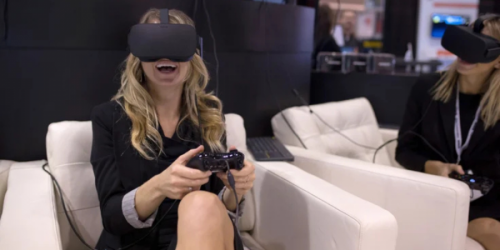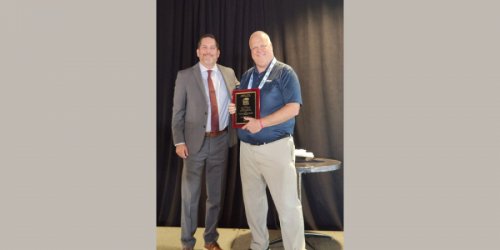Q&A Forums
Icynene claims Post New Topic | Post Reply
| Author | Comments |
|---|---|
|
Terry Adams
Posted: Feb 17, 2009 08:13 PM
|
Icynene claims
The local Icy dealer down (Deep South) here is saying that their foam does not require a fire barrier. In this case the point is a moot because the area he is saying needs a fire barrier is covered by sheetrock and has no access, but for future references (true of false). I know this subject has been discussed to death but I couldn't find any threads. I don't keep up with their product but everytime there is something questionable it comes from their contractors.Thanks |
|
Frank Bood
Posted: Feb 17, 2009 11:05 PM
|
In there own hand out for building code officials it is stated it does need a fire barrier in some areas. If its covered by sheet rock as you stated its all set. I spray what our sales guys sell and it seems they sell the heck out of the icynene because it does not off gas. Im a demilec fan myself. |
|
mason
Posted: Feb 18, 2009 09:02 AM
|
All foam plastics require a thermal barrier in inhabited areas and an ignition barrier in attics and crawl spaces. A thermal barrier is the equivalent of 1/2 inch of drywall or is tested in accordance with ASTM E 119 to be a thermal barrier. Specific applications of foam and various proprietary coatings and materials can be tested in accordance with other room corner fire tests such as UL 1715,FM 4880, UBC 26-3 NPFA 286 and others. If an assembly is tested and passes the room corner test, the supplier applies to the ICC Evaluation Services for an evaluation report that lets the consumer and code official how it can be installed in various applications. In Icynene's case, they have a legacy evaluation report dated May 2003 which allows (in limited circumstances) the use of their foam in attics without a thermal barrier. The legacy report will be sunseted soon and is only applicable to areas that use the ICC codes adopted before the last date of the issuance of the report (ie; before May 2003.) There are a few other products that have legacy reports based on a specific attic and crawl space test. The test SWRI -99 has been controversial in that the baseline assembly that the assembly is compared to is kraft faced fiberglass. You could pass the old test if your product performed equal to or better than the kraft faced fiberglass in the SWRI test procedure. But kraft faced fiberglass is not a code approved assembly and flashes over in about 1 to 2 minutes. So it is a low bar to jump over. That is why the foam industry developed a task group to review the existing tests and determine an alternative to approving ignition barriers in attics and crawl spaces. New procedures have been developed and will go into effect on an interim basis later this year. In order to pass there will be a timed pass fail rather than a comparison test. and instead of using kraft faced fiberglass, the task group used 1/4 plywood to determine the pass fail time line. So before using a material with any igntion barrier other than what is specifically listed in the building code, ask for their evaluation report and look at the date and the type of test used for qualification. If it says ICC evalution report it is good for at least 2 years. If it says Legacy report it won't be good for current codes only for the date it was last issued. PS, sprayfoams do not off gas harmful fumes after they cure. Cure typically takes place from 2 to 24 hours. There is no difference in the harmful emission between open cell and closed cell foam. Both products contain PMDI which is the most harmful during application, catalysts and fire retardents. The main difference is the type of blowing agent used. Open cell uses water or carbon dioxide as a blowing agent while most closed cell foams use HFC 245 fa blends. Neither blowing agent blends would emitt harmful fumes into the building. Hope this helps. |
|
SPFer
Posted: Feb 18, 2009 09:36 AM
|
Mason, What about other types of insulation and thermal barriers? Do fiberglass (faced and unfaced), cellulose, dense pack cellulose, rigid etc. require the same thermal barrier in inhabitable space? |
|
Frank Bood
Posted: Feb 18, 2009 04:30 PM
|
"PS, sprayfoams do not off gas harmful fumes after they cure. Cure typically takes place from 2 to 24 hours. There is no difference in the harmful emission between open cell and closed cell foam." They dont off gas "HARMFUL" fumes so what do they off gas long term? Our rep for icynene slanders all other brands because they "off gas" long term. Is he wrong? Thanks |
|
Terry Adams
Posted: Feb 18, 2009 09:59 PM
|
Your right about dissing other brands, Its like they invented foam and once they drink the icynene cool-aid they really believe what they say. The icy guy said he never heard of Bayer foam and couldn't find their web site "duh", maybe he was googling "bear foam" geez LOL |
|
mason
Posted: Feb 19, 2009 09:01 AM
|
Both fiberglass and cellulose do not require additional thermal barriers. However kraft faced fiberglass does require a thermal barrier over it. All foam plastics require thermal or ignition barriers due to their distinctive burining characteristics. Check out my articles on the topic at masonknowles.com |
|
mason
Posted: Feb 19, 2009 09:04 AM
|
impaidbyu, The blowing agents used in closed cell foam are non-ozone depleting but have very minor global warming characteristics. However, half of the blowing agent is absorbed into the cell wall matrix and is not release unless the foam is burned, even then it is mostly consumed in the fire. The other half is slowly released over hundreds of years. So, it is so minute that you cannot measure it with existing equipment. Also, any coating or substrate that it is attached to extends the release of the blowing agent. Again the blowing agent does not contribute to poor indoor air quality in a building. Some folks misunderstand "thermal drift" in thinking the reduction in closed cell foam's initial R value from around 7.0 to around 6.0 is based on the release of its blowing agent. Actually, it is the ingress of outside air into the foam cells that lower the initial R value of the product. The "thermal drift" can be reduced by the type of substrate (metal allows less thermal drift than wood or concrete) and the thickness of the foam. Typically thicker applications allow less ingress of outside air over time than thinner applications. Hope this clears up the confusion. |
|
Frank Bood
Posted: Feb 19, 2009 05:44 PM
|
Mason, If off gas can not be measured due to its minute level how can one say one does and one dont? Is there a place i could get some lab data on this subject?' Thank you for your insiteful input it is very helpful. |
|
mason
Posted: Feb 20, 2009 07:34 AM
|
Scientist measure the blowing agent content of foam at different time intervals. While tools cannot measure the actual chemical leaving the foam in a field test, they can measure the amount of blowing agent leaving the foam in laboratory conditions over a period of months and years. They can also measure blowing agent that has dissolved in the cell wall matrix. For more information; obtain a copy of Dr Mark Bomberg's book Spray Polyurethane Foam in External Envelopes of Buildings. Specifically the chapter Factors Affecting the Performance of Foam, section 5 Blowing agent Emission from SPF. Also, check with the National Research Council of Canada for their research on the subject. I think the book is out of print but can be obtained by a google search or on E Bay. |
|
philip mullins
Posted: Feb 22, 2009 11:49 PM
|
hey terry, i too have run into that guy. he's just like the other icy guys here. maybe a little worse. why not just say "i spray icy cause i like the way it sprays, and icy does a great job of marketing." you gotta stake ur claim on your ability to do quality work. not slanderous claims about other people. i have seen his work. and i have seen yours too, and everyone elses around here for that matter. i am NOT saying anything bad about anyones work but, he's not on the same level as you guys. "In there own hand out for building code officials it is stated it does need a fire barrier in some areas. If its covered by sheet rock as you stated its all set. I spray what our sales guys sell and it seems they sell the heck out of the icynene because it does not off gas. Im a demilec fan myself." mason's replies, combined with my own version of common sense lead me to believe a quality half pound foam is, well, a quality half pound foam. thier are some situations where it will not need a thermal barrier. i guess that any brand could test thier product in a particular situation and then spred a rumor that it does not need the barrier. BUT, to say that other foams off gas long term..., i dont think that your rep for icynene is wrong as much as he is a liar. probably tall, bald, and ugly too. and he should be held down and kicked in the nuts every time he tells that lie! its bad enough coming from reps but the applicators are the worst ones. and its not just icy any more. its like no one bids the job anymore. they just bid against every one else. not realizing that everyone else comprises thier own industry. thats what they are slandering, the whole industry. just tell 'em what it is, how it works, and what it cost. and it helps if you actualy care about ur work. |





























